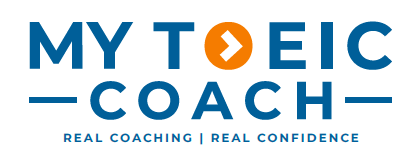✅ What Actually Works — Real Patterns You Can Trust
How TOEIC Tests Very / Much / A Lot / Very Much
Some TOEIC traps aren’t about hard vocabulary — they’re about tiny words you already know.
Very, much, a lot, very much — all sound familiar, all feel fine in conversation. But on the test, put them in the wrong place and you’ll lose the point.
1️⃣ The Trap
TOEIC gives you four short options. Three look okay, one is correct. The wrong ones? They’re wrong in ways you might not notice when the clock is ticking.
Common wrong answers:
❌ He very works on weekends.
❌ I much enjoyed it.
❌ It’s much cold.
❌ They very like coffee.
❌ We enjoyed very much.
2️⃣ Patterns That Always Work
Very → Before feelings or conditions
It’s very cold today.
She speaks very clearly.
That movie was very good.
❌ Never before an action word:
❌ He very works on weekends.
❌ I very enjoyed it.
Much → After negatives or in yes/no questions
I don’t eat much in the morning.
She doesn’t talk much.
Did you enjoy the party much?
❌ Not in positive statements:
❌ I much enjoyed the movie.
❌ It’s much cold outside.
A Lot → After the action in positive sentences
I like this job a lot.
They travel a lot.
We talked a lot after class.
❌ Not before feelings/conditions:
❌ It’s a lot cold today.
❌ He a lot works on weekends.
Very Much → Fixed phrase after the action for strong feeling or thanks
I appreciate your help very much.
We enjoyed the concert very much.
3️⃣ TOEIC-Style Practice
Q1. I ___ enjoyed the presentation.
(A) very
(B) much
(C) a lot
(D) very much
✅ Answer: (D) very much — “Very” can’t go before an action. “Very much” works as a phrase after it.
Q2. He works ___ on weekends.
(A) very
(B) a lot
(C) much
(D) very much
✅ Answer: (B) a lot — Positive sentence, comes after the action.
Q3. It’s ___ cold today!
(A) much
(B) very
(C) a lot
(D) muchly
✅ Answer: (B) very — Goes before a condition like “cold.”
Q4. I don’t eat ___ in the morning.
(A) a lot
(B) very
(C) much
(D) very much
✅ Answer: (C) much — Negative sentence, so “much” is correct.
Q5. Do you travel ___ for work?
(A) very
(B) a lot
(C) much
(D) very much
✅ Answer: (C) much — Yes/no question, “much” is natural here.
📌 Strategy / Takeaway
Very → Before feelings or conditions.
Much → After negatives or in yes/no questions.
A lot → After the action in positive sentences.
Very much → Fixed phrase for thanks or strong feeling after the action.
Golden Rule:
If it feels strong but slightly awkward, pause — TOEIC is probably using it as a trap.
Final Word
These words are short and simple, but TOEIC uses them to separate careful readers from guessers. Know the pattern, place them correctly, and you’ll grab easy points while others miss them.
For more strategies and resources to master TOEIC word placement traps, visit the English Library Collection and start locking in adverb placement confidence today.

